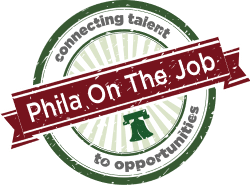Businesses

FAQ's
What is a reasonable accommodation?
Reasonable accommodations are intended to ensure that qualified individuals with disabilities have rights in employment equal — not superior — to those of individuals without disabilities. A reasonable accommodation is a modification to a job, work environment or the way work is performed that allows an individual with a disability to apply for a job, perform the essential functions of the job, and enjoy equal access to benefits available to other individuals in the workplace.
Are accommodations for people with disabilities expensive?
The majority of workers with disabilities do not need accommodations to perform their jobs, and for those who do, the cost is usually minimal. According to the Job Accommodation Network (JAN), a service from the U.S. Department of Labor's Office of Disability Employment Policy, 57% of accommodations cost absolutely nothing to make, while the rest typically cost only $500. Moreover, tax incentives are available to help employers cover the costs of accommodations, as well as modifications required to make their businesses accessible to persons with disabilities.
Another aspect to keep in mind is that sometimes an accommodation for one person could serve as a Universal Design approach supporting everyone. For example, ergonomic chairs can support all employees in decreasing health issues while increasing productivity.
How can I support an inclusive work environment between recruitment and retention?
Inclusion is not a checkbox. It is an ongoing practice to ensure people feel welcomed and are welcomed. We are always striving to do better and be better in the workplace. Here are some ways to support:
- Have a point of contact on your website for support in completing applications and/or requesting an accommodation for an interview.
- Eliminate coded language, bias, and insider jargon in job descriptions.
- Expand recruiting efforts by connecting with communities that you have not recruited from in the past (ex., Vocational Rehabilitation, American Job Centers).
- Be intentional about inclusion by committing to accessibility in all facets of the workplace.
- Provide space for collaboration and feedback to support and empower employees – ERGS are great!
Where can I get information about hiring someone with a disability?
Employer Assistance and Resource Network on Disability Inclusion (EARN) – https://askearn.org/
Dept of Labor, Office of Federal Contract Compliance Programs - https://www.dol.gov/agencies/
Email us at talentPHL@philaonthejob.org to see what direction is right for you.
Creating Inclusive Workspaces and Places
A key phrase we hear is Diversity and Inclusion, however we often forget the ‘I’ portion of that phrase.
Take a moment to think about your company. When you look around your workplace, what do you see? Who do you see? You may be wondering… “What can I do?” The truth is, there are many ways in which YOU can help foster a more inclusive workspace. Here are some tips and resources based on the different ways you can positively impact your workspace AND your company’s return on investment:
Tips and Resources for Inclusive Workspaces
Ask a colleague or two to grab lunch –
Asking people to lunch who you do not normally associate with broadens your worldview. It also helps you expand your viewpoint within your job, as you gain perspectives from people in different roles and from various walks of life. These informal conversations can cultivate innovation and even support you in furthering your career. Maybe the role you’re in doesn’t allow for lunch breaks like this, so try simply changing up your environment in some other way that allows you to talk with colleagues you do not normally talk with. Even try bouncing an idea off of someone unexpected! Who knows what creativity may come of it!
Leave your assumptions at the door –
It is often natural and easy to make assumptions about others in the workplace, however doing so often leads to misunderstandings, biases and wrong conclusions. Next time you find yourself assuming something (even as simple as “They’re probably too busy”), stop yourself. Ask the person the question and even if you confirm your assumption, you now have an informed understanding that can be explored further.
Value differences –
When people feel valued as individuals, it creates an environment welcoming of people to bring their whole selves to work. When this occurs, innovation happens.
Provide employees a safe space to voice concerns –
This includes a transparent process to request an accommodation.
Make your workspace accessible (Universal Design) –
Universal Design can make your workplace more welcoming for everyone. From ramps, to elevators, to closed captioning, to providing alternative methods to meetings, knowing that people can access knowledge and resources in a variety of ways can help you be a more productive workplace. Enlist an expert if needed!
Understand that you will never be ‘done’ –
Just as companies grow and change over time, so does the notion of inclusion. This will be something that continually evolves, and you can always work on being better.
Additional Sites & Resources
These additional sites and resources can support you and your company in cultivating an accessible and inclusive workplace:
